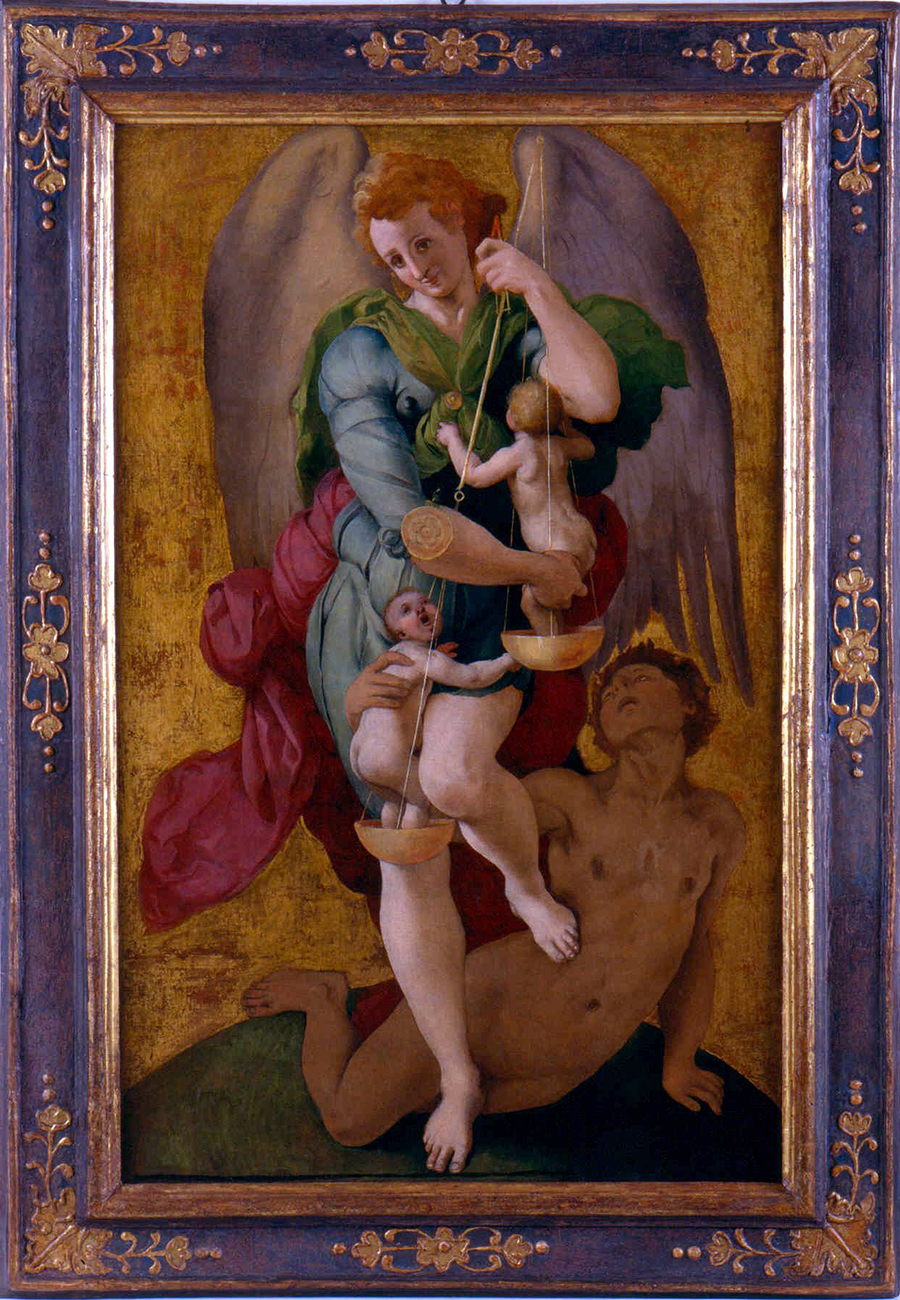Christopher Lakey
The Materials of Anachronism: Gold Ground Painting during the Long Middle Ages (1200–1500)

Agnolo Bronzino, St. Michael and the Devil, c. 1525–1528, oil on canvas and gold leaf, Museo Civico d’Arte Antica, Palazzo Madama, Turin
My project questions the medieval/Renaissance divide by examining the continuities between periods in terms of the relationship between natural philosophy and the persistent use of gold leaf in painting. Natural philosophy consisted of a broad range of topics—from optics, medicine, and the theology of creation to the study of natural and supernatural phenomena. Texts as diverse as theological treatises on the nature of God, lapidaries, alchemical texts, and artistic handbooks discuss these topics. These texts share a common concern with the natural and supernatural properties of matter and contributed to an aesthetics of materiality. In our modern systemization of knowledge, these subjects seem more disparate than they were originally thought to be, and are now often cataloged and studied according to modern specializations that medieval and early modern people would not have understood. For instance, in modern libraries, books on art theory and technique are separated from those on stones and minerals, while in the Middle Ages and the Renaissance, such treatises were often bound together to form a single reference manuscript on the nature of materials and their properties. By drawing from research in the history of art, conservation, natural philosophy, and theology, my book investigates how gold produced meaning for historical subjects, and how works of art were informed by and contributed to medieval understandings of materiality.
While recent scholarship has productively questioned the period divide between the Middle Ages and the Renaissance, this most commonly occurs from the point of view of Renaissance historians looking back onto the Middle Ages to better understand peculiarities in the historical record. Chief among them, in Anachronic Renaissance (2010), Alexander Nagel and Christopher Wood explored works of art that belie normative periodization. A principal aim of their book is to argue for the transhistorical signification, or in their words the “temporal plurality,” of a work of art rather than to emphasize its moment of creation in a teleological chain. My project complements this work by engaging similar hermeneutic models to question the historical logic of this period divide, while also expanding beyond their approach in two important ways. First, I focus on the persistent use and theorization of materials, particularly gold, among a variety of discourses. For instance, the production of pigments, inks, and gold leaf were all part of the science of alchemy concerned with the transformation of matter. These texts, while largely written in the Middle Ages, were part and parcel of workshop practice and art theory well into the 16th century. Second, I consider the problem of periodization from the point of view of the long Middle Ages rather than looking back onto it from an already supposed epistemic break. This reframing allows me to place the question of materiality in art history into a diachronic framework, which, in turns, reveals continuities in theory and practice among these traditions over time. It also yields the inclusion of overlooked and marginalized texts and works of art—for example, the Segreti per Colori, an artistic manual compiled in Central Italy just prior to Leon Battista Alberti’s De pictura of 1435.

Pacino di Bonaguida, The Chiarito Tabernacle, 1340s, gilded gesso and tempera on panel, J. Paul Getty Museum, Los Angeles
My book seeks to accomplish two things: First, to complicate the normative history of painting that understands the use of gold to have decreased while naturalism and oil painting increased. (The use of gold by early modern artists—for example, in Agnolo Bronzino’s gilded processional standard, St. Michael and the Devil—was thus understood to be “archaizing” or “medievalizing.”) Second, to better understand the broader importance of gold in European visual culture that moves beyond the vague, yet repeated, notion that gilding is somehow only symbolic of the divine. By focusing on the use value of gold, I argue that these works should be understood not only as bearers of symbolic meaning, but also as intrinsically scientific and material objects. Gold is a versatile medium. After being beaten into flat layers from coins, gold leaf can be manipulated in a variety of ways (e.g., scratched, punched, pricked, gouged, and raised in pastiglia, as, for example, in Pacino di Bonaguida’s Chiarito Tabernacle), allowing innovative artists to develop strategies of art-making that exceeded the limits of gold’s symbolic value and revealed tensions between materiality and illusionism and between the mimetic qualities of painting and the more abstract or metaphoric.
Rhinebeck, NY
Ailsa Mellon Bruce Senior Fellow, spring 2023
Christopher Lakey will continue his book project as an independent scholar.
